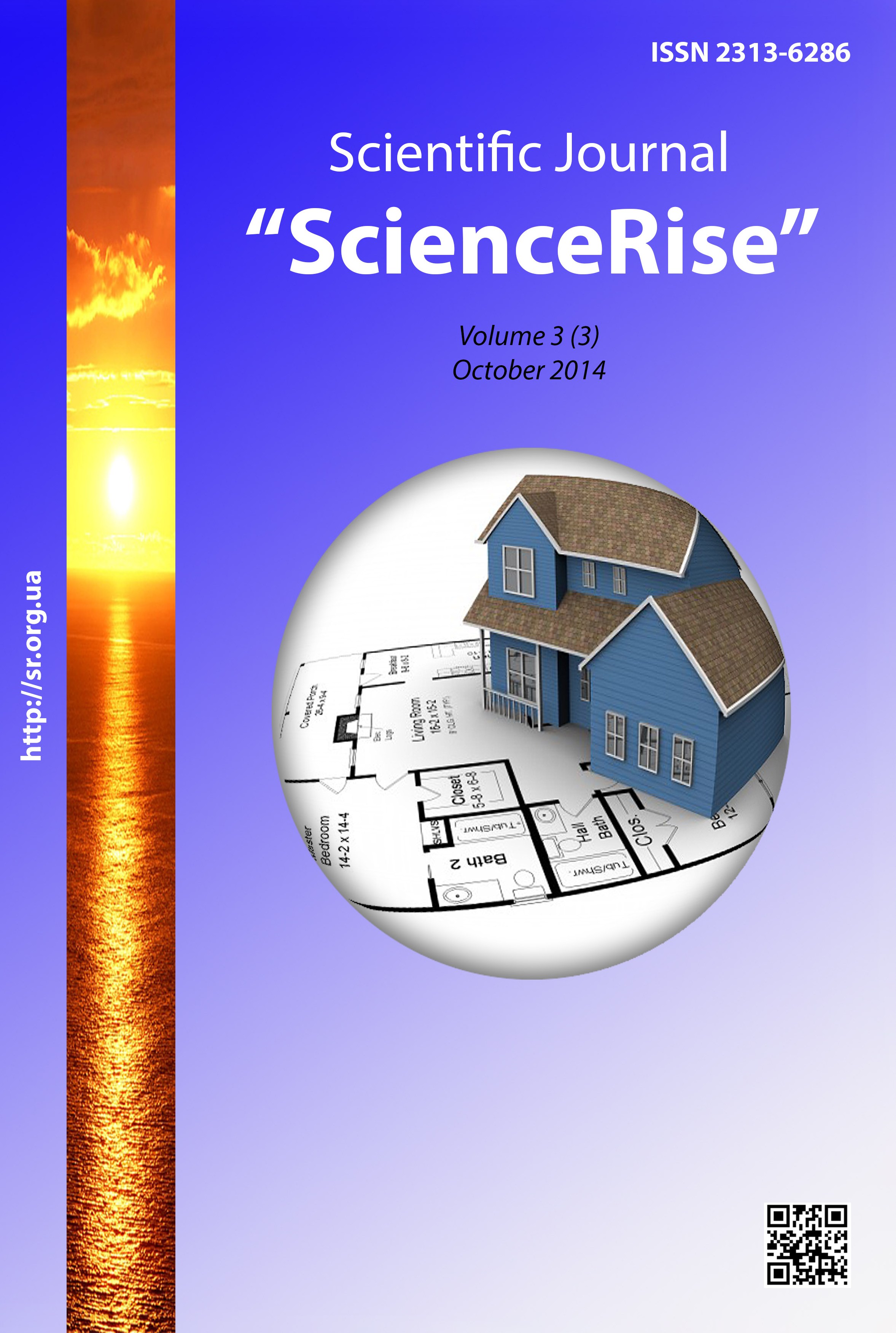Методологічні аспекти використання трансформаційного підходу щодо дослідження електорального простору
DOI:
https://doi.org/10.15587/2313-8416.2014.27606Ключевые слова:
електоральний простір, трансформаційна модель, якісні методи, кількісні методи, факторний аналіз, кореляційний аналізАннотация
В статті розроблено методологічні засади використання трансформаційної моделі із використанням якісних та кількісних методів дослідження електорального простору, серед яких методи факторного та кореляційного аналізу. Було розроблено та запропоновано підхід до параметричного визначення та методологічного закріплення показника «Відрізок зламу лінії кореляції між двома рядами даних» (в розрізі оцінки електорального простору під час виборчих кампаній).
Библиографические ссылки
1. Blagoveshhenskij, Ju. N. (2004). Analiz vyborov v Dumu-2003 i stratifikacija izbiratelej. Internet-monitoring vyborov 2003-2004 gg. v Rossii [Analysis of elections in Parlament - 2003 and stratification of electors. Internet-monitoring of elections 2003-2004 is in Russia]. Moscow, Russia: INDEM, 115–130.
2. Grishin, N. V. (2008). Dinamika jelektoral'nyh predpochtenij naselenija Juga Rossii. Sravnitel'noe issledovanie [Dynamics of electoral preferences of population of South of Russia. Comparative research]. Moscow, Russia: Publishing house "Socio-political IDEA", 182.
3. Dziadyk, Yu. V. (2009). Obraz Ukrainy u elektoral'nomu prostori: dynamika, konstanty, prohnoz [Character of Ukraine in electoral space: dynamics, constants, prognosis]. Available at : http://vs.irtc.org.ua/~dzyadyk/vyb/Dzyadyk-2009-11-17.pdf (Last access: 17.09.2014). Title from the screen
4. Doklad o chelovecheskom razvitii 2013. Vozvyshenie Juga: chelovecheskij progress v mnogoobraznom mire [Lecture about human development 2013. Rise of South : human progress in the varied world]. Available at : http://hdr.undp.org/sites/default/files/hdr_2013_ru.pdf (Last access: 17.09.2014). Title from the screen
5. Evstifeev, R. V. (2009). Melodii jelektoral'nyh prostranstv. Politicheskij process i jelektoral'nye predpochtenija izbiratelej (Vladimirskaja oblast', 1999-2009 gg.) [Melodies of electoral spaces. Political process and electoral preferences of electors (Vladimirskiy area, 1999-2009)]. Vladimir, Russia: Sobor, 192.
6. Kliuzhev, O. V. (2012). Elektoral'nyj prostir u konteksti transformatsijnykh zmin v ukrains'komu suspil'stvi [Electoral space is in the context of transformation changes in Ukrainian society]. Donetsk, 193.
7. Kovrov, V. F. (2007). Teoretiko-metodologicheskij analiz jelektoral'nogo povedenija: sociologicheskij aspekt [Theoretical methodological analysis of electoral behavior: sociological aspect]. Moscow, Russia: Paleotip, 188.
8. Meleshkina, E. (2000). Faktory strukturirovanija jelektoral'nogo prostranstva [Factors of systematization of electoral space]. Structure and dynamics of Russian electoral space, 2, 89–92
9. Furashev, V. N. (2007). Modelirovanie informacionno-jelektoral'nyh processov [A design is informative – electoral processes]. Kyiv, Ukraine: NIICPI AprN Ukraine, 182.
10. Hamutovskaja, S. V. (2011). Konkretno-sociologicheskij podhod k izucheniju jelektoral'nogo povedenija naselenija: sushhnost' i osobennosti [Certainly-sociological going near the study of electoral behavior of population: essence and features]. Sociological almanac, 2, 263–269.Загрузки
Опубликован
Выпуск
Раздел
Лицензия
Copyright (c) 2014 Михайло Михайлович Шелемба

Это произведение доступно по лицензии Creative Commons «Attribution» («Атрибуция») 4.0 Всемирная.
Наше издание использует положения об авторских правах Creative Commons CC BY для журналов открытого доступа.
Авторы, которые публикуются в этом журнале, соглашаются со следующими условиями:
1. Авторы оставляют за собой право на авторство своей работы и передают журналу право первой публикации этой работы на условиях лицензии Creative Commons CC BY, которая позволяет другим лицам свободно распространять опубликованную работу с обязательной ссылкой на авторов оригинальной работы и первую публикацию работы в этом журнале.
2. Авторы имеют право заключать самостоятельные дополнительные соглашения, которые касаются неэксклюзивного распространения работы в том виде, в котором она была опубликована этим журналом (например, размещать работу в электронном хранилище учреждения или публиковать в составе монографии), при условии сохранения ссылки на первую публикацию работы в этом журнале .

